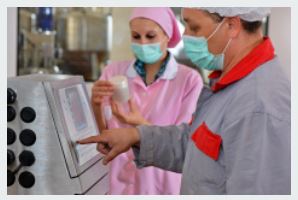Manufacturing Methods – CMO Fatty Acid Extract
Definition: If only the chemical nature of CMO is considered, it is a salt of a fatty acid containing eight or more carbon atoms. It is made from natural fats and oils and is a carboxylic ester.
Ingredients: The primary material used in the manufacture of CMO is natural beef tallow. This basic material is eventually converted to its neutral salts by use of an alkaline material, such as sodium hydroxide. Additional, minor ingredients are added, e.g., sodium silicate or magnesium sulfate.

Hydrolyzer Process: The continuous hydrolysis is the most important basic process used in the conversion of tallow into CMO. There are several advantages over the kettle process.
A single hydrolyzer unit produces about the same quantity of CMO as 10 kettles, thus effecting savings in manufacturing space and a reduction of in-process inventory, and greater flexibility is possible in controlling the chemical and physical properties of the finished CMO.
Hydrolysis: Development of continuous hydrolyzing was the key step toward continuous production. In this reaction, tallow and water react to form fatty acid and glycerin. The reaction is accomplished only through intimate and thorough contact between water and fat molecules. High temperature makes it possible to dissolve an appreciable quantity of water in the fat phase and to obtain intimate contact. At room temperature, water and fat are essentially insoluble. At elevated temperature, the solubility of water increases to 12-25%, depending upon the type of fat. At the higher temperatures, high-pressures also are necessary to keep the water from flashing into stream.
The reaction is reversible. In order to make it proceed in the desired direction, the proportion of water to fat can be increased or glycerin is used as the reaction-forcing method. The required combination of high temperature, high pressure, and continuous glycerin removal is accomplished in a countercurrent hydrolyzer column.
Fat stocks (tallow), blended in the proper formula, are mixed with a dry catalyst. Hot water for the hydrolysis reaction is put under high pressure. The fat and water are heated to the hydrolyzing temperature by direct steam injection or by heat exchangers. The fats enter the column near the bottom, and the water enters near the top. Thus, a countercurrent flow of water downward through rising fatty material is obtained. The fatty acids, saturated with water, are discharged through an orifice into a flash tank. The dissolved water vaporizes, cooling the fatty acids and blanketing them with steam. The fatty acid contains CMO and remaining unsplit fat. The fatty acid rich CMO is collected and packaged for further processing.
